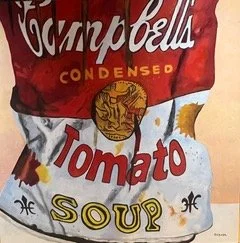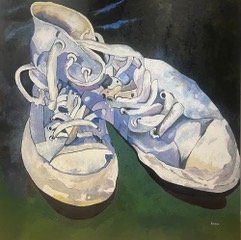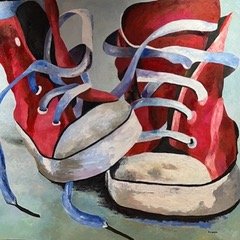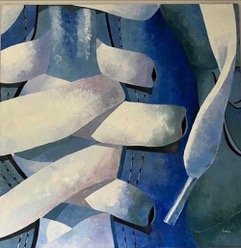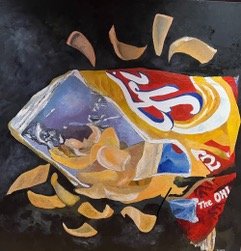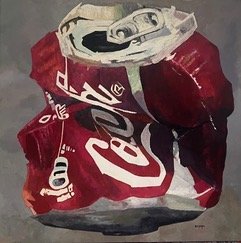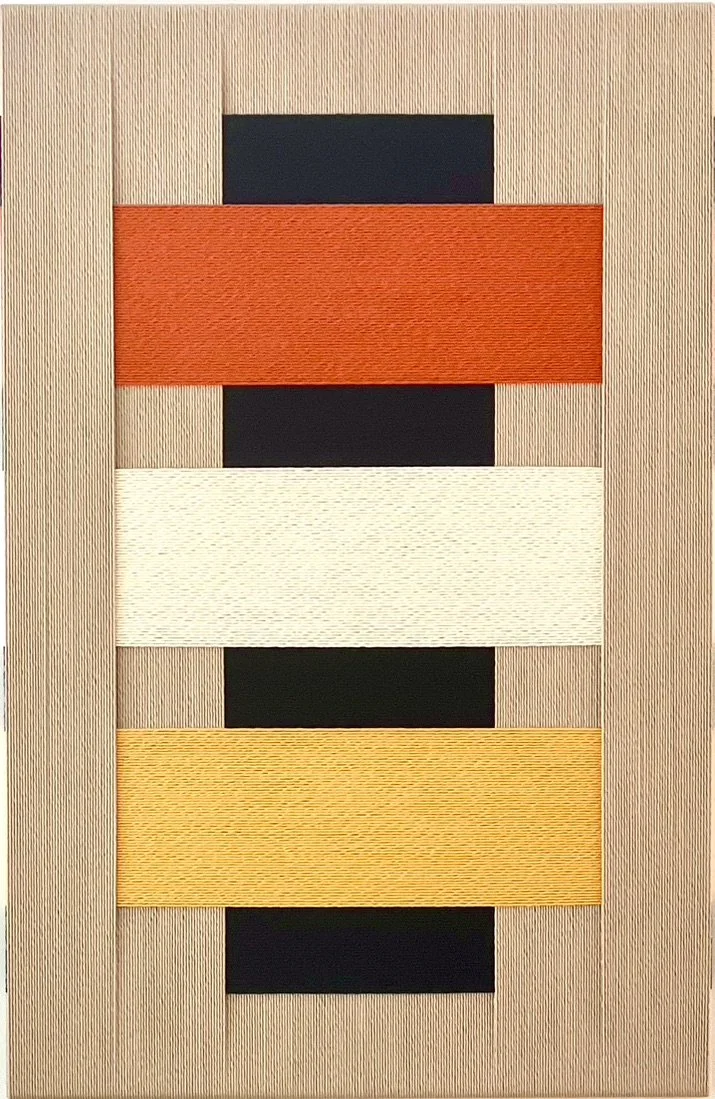Interview with Suyapa Quinn
Your career began in a role immersed in art history at the Metropolitan Museum of Art. How have the historical art pieces you encountered influence your creative process, and can you pinpoint any specific artists or movements that resonate deeply with your current work?
My career began with a rich immersion in art history at the Metropolitan Museum of Art.
My experience there profoundly shaped my creative process. Encountering such a vast array of historical art pieces provided me with a deep appreciation for the narratives, techniques, and contexts that define different periods and styles.
The most significant influences that affected me the most were the works of Joan Miró, Pablo Picasso, Salvador’s Dali, Rene Magritte, Giorgio De Chirico and George Brague.
I appreciated the way they translated their experiences into images that were wholly theirs, yet understandable by others. They created visual communication that moved and inspired the world.
Their experimentation with color, light, and brushwork encouraged me to explore new ways of capturing moments and emotions to push the boundaries of traditional techniques.
Overall, the historical art I encountered at
The Met continues to inform and enrich my creative process, driving me to blend historical techniques with contemporary perspectives.
Over the years, you’ve transitioned from animator to graphic designer, to art director, and now to children’s book author. What were the challenges and opportunities you encountered as you navigated through such diverse artistic disciplines? How has each role contributed to your evolution as an artist?
Starting as an animator, I learned the intricacies of storytelling through movement and the importance of timing and fluidity.
The challenge was mastering the technical aspects while maintaining a strong narrative, but it provided a solid foundation in visual storytelling and character development.
When I transitioned to graphic design, I encountered new challenges in balancing aesthetics with functionality. Designing for different mediums required a deep understanding of how visual elements interact with textual content. This role honed my skills in layout, typography, and visual hierarchy.
It taught me how to create compelling visuals that communicate effectively.
As an art director, I faced the challenge of overseeing and guiding creative projects while collaborating with diverse teams. This role sharpened my ability to manage multiple aspects of a project, from concept development to final execution. It also offered opportunities to develop leadership skills and a broader perspective on how different disciplines intersect.
Finally, moving into children's book authorship allowed me to combine my experiences and explore a new form of storytelling. Crafting narratives and illustrating for a younger audience presented unique challenges, such as simplifying complex ideas and making them engaging for children. However, it also provided a wonderful opportunity to merge my skills in animation, design, and art direction to create something both visually and narratively rich.
Each role has contributed to my artistic growth by expanding my skill set, offering new perspectives, and allowing me to blend various techniques and approaches. These experiences have collectively shaped my approach to storytelling and design, helping me create more nuanced and engaging work.
Your artistry heavily features objects with seemingly ordinary origins that carry extraordinary narratives. Can you delve into how you decide which objects to elevate in your work, and what techniques do you employ to ensure they resonate with the narratives you aim to convey?
Choosing ordinary objects to feature in my work involves a blend of intuition and intentionality. I’m drawn to items that, at first glance, might appear mundane but I perceive to possess hidden stories or symbolic significance. These objects often hold personal or cultural meanings that I see being illuminated through art.
Selection Process:
Personal Connection: I start by exploring objects that resonate with me on a personal level or evoke a particular memory or feeling. This personal connection helps to infuse the work with genuine emotion and depth.
Symbolism and Story: I consider the broader symbolism of the object. For instance, an old key might represent unlockable secrets or past experiences. I delve into my own intuitive experience for the history and cultural context I envision and so uncover layers of meaning that can enrich the narrative.
Aesthetic Potential: I evaluate how the object fits within the visual and thematic elements of my work. The shape, texture, and color of the object are important in ensuring that it integrates seamlessly into the overall composition.
Techniques for Resonance:
Contextual Framing: I place the object in a context that highlights its narrative potential. This might involve manipulating it’s condition, degree of use to amplify its significance, or juxtaposing it with textures, light, and bold color to draw out its deeper meanings.
Visual Emphasis: I use techniques such as lighting, color contrast, and scale to draw attention to the object. By highlighting certain features or details, I can enhance the viewer's perception of its importance.
Storytelling Through Composition: I carefully craft the composition to guide the viewer's eye and narrative journey. The placement and interaction of the object with other elements can suggest its story and elicit emotional responses.
By focusing on these techniques, I ensure that the ordinary objects in my work are elevated and resonate with the narratives I aim to convey. The goal is to transform the mundane into something that feels both meaningful and extraordinary to the viewer.
Your artist statement mentions that your goal is to capture and convey emotions through your paintings. Could you share how you approach the emotional spectrum in your work? What methods do you find most effective in ensuring your art not only represents but also evokes specific emotions?
Capturing and conveying emotions through my paintings is central to my artistic practice. My approach to the emotional spectrum is both deliberate and intuitive, aiming to create work that not only represents but also evokes specific feelings.
Approach to Emotional Spectrum:
Emotional Themes: I start by identifying the core emotions I want to explore. Whether it's joy, melancholy, or nostalgia, I choose themes that resonate deeply with me and that I believe will connect with viewers on a personal level.
Visual Language: I develop a visual language that aligns with these emotions. This includes selecting color palettes, textures, and forms that embody the feeling I want to convey.
Methods to Evoke Specific Emotions:
Color and Light: Color is one of the most powerful tools for evoking emotions. I carefully select and combine colors to create mood. For example, soft pastels can create a sense of calm, while bold contrasts can intensify feelings of drama or tension. Similarly, the play of light and shadow helps to add depth and emotional resonance to the work.
Composition and Perspective: The way elements are arranged in the composition affects the emotional impact. I use composition to guide the viewer's eye and create a narrative flow that aligns with the intended emotion. For instance, a close-up perspective can create intimacy, while a distant view might evoke a sense of longing or isolation.
Texture and Brushwork: Texture plays a crucial role in conveying emotion. I use a palette knife for textural techniques to add dimension and evoke a tactile sense that complements the emotional tone. For example, rough, expressive brushstrokes might convey agitation or turmoil, while smooth, fluid lines might suggest serenity or grace.
Personal Experience: Drawing from personal experiences and emotions helps to infuse authenticity into my work. I channel my own feelings and reflections into the paintings, which adds a layer of sincerity and emotional depth that viewers can often sense.
By combining these methods, I aim to create paintings that not only represent emotions but also engage viewers in a meaningful emotional experience. The goal is to evoke a response that feels immediate and personal, allowing the artwork to resonate on a deeper level.
Leading your own company, Image Perfect, you had to balance creative aspirations with business responsibilities. What were your strategies for maintaining creative integrity while managing business operations, and how did you navigate the challenges of leading creative teams toward a unified vision?
Image Perfect, functioned as a rambunctious group of artists that I led in a chaotic, creative way to achieving the best work.
Establishing a Clear Vision: I articulated a strong, cohesive vision for each project. This vision served as a guiding principle for decision-making and project execution.
Encouraging Open Communication: I fostered an environment where team members could openly share their creative ideas and feedback. This collaborative approach ensured that everyone was aligned with the company’s artistic goals and business needs.
Setting Boundaries for Creativity: I implemented structured workflows that allowed for creativity while meeting business deadlines. This included dedicated time for brainstorming and creative development within project timelines.
Client Collaboration: I worked closely with clients to understand their needs and communicate how our creative vision could meet their objectives. This helped manage expectations and maintain creative integrity.
Regular Check-Ins and Flexibility: I conducted regular check-ins with the team to address any challenges and adjust strategies as needed. Flexibility was key to adapting to both creative and business demands.
Navigating these challenges involved balancing the artistic desires of the team, a hectic - but joyful process, and the practical requirements of running a business, ensuring that both aspects supported and enhanced each other.
Given your experience with art therapy at Harlem Hospital and teaching in Queens, how do you view the role of art in community healing and education? Can you share a particularly impactful experience or project from your time in these roles?
My commitment to art extends to education, where I taught art in public high schools in Queens, New York, and conducted art therapy sessions at the Harlem Hospital Center, enriching the lives of many through her knowledge and passion.
Role of Art in Community Healing and Education:
Emotional Expression and Healing: Art provides a safe outlet for expressing emotions, which can be particularly healing for individuals dealing with trauma or illness. It allows people to process their experiences and emotions in a non-verbal, therapeutic way.
Building Connections: In community settings, art fosters connections between individuals and groups. It can bridge cultural and social gaps, creating a shared space for dialogue and understanding.
Empowerment and Confidence: Art education empowers individuals by developing their creative skills and self-expression. It builds confidence and provides a sense of accomplishment, which is vital for personal and community growth.
Impactful Experience:
One particularly impactful project helped patients express their personal journeys and fostered a sense of unity and shared purpose among the hospital community. The experience became a lasting symbol of collective strength and healing.
In Queens, teaching art to underprivileged youth offered similar insights. One memorable project involved creating a series of community-based art installations. The process allowed students to explore their identities and share their stories, leading to increased engagement and pride in their work. This project highlighted the transformative power of art in education and its ability to inspire and uplift individuals and communities.
Your work has been recognized globally, yet you maintain a strong presence in local galleries and community art scenes. How do you balance this global-local dynamic in your career, and how does each sphere influence your work differently?
Balancing a global presence with involvement in local galleries and community art scenes involves a careful blend of outreach and engagement.
Balancing the Global-Local Dynamic:
Maintaining Local Roots: I stay deeply engaged with local galleries and community art scenes to ensure that my work remains grounded and connected to my immediate environment and the community that I love.
Global Perspective: My international exposure is both a delight and an opportunity to explore new ways of thinking, to explore diverse influences and perspectives, enriching my work with broader cultural insights. It also provides opportunities to engage with a wider audience and collaborate with artists from different backgrounds.
Influences from Each Sphere:
Local Influence: Local art scenes offer direct feedback and a sense of community connection. I cannot help but to be a product of my environment - at least in part. Local exhibitions and collaborations keep my art relevant to my immediate context and strengthen community ties.
Global Influence: Global recognition and exposure allow me to experiment with new ideas and techniques, informed by diverse cultural influences. International interactions broaden my artistic horizons and offer fresh perspectives that can be integrated into my local work, creating a dynamic interplay between global trends and local relevance.
By balancing these spheres, I ensure that my work remains both locally grounded and globally informed, allowing me to create art that is rich in context and resonant across different audiences.
Venturing into children’s literature, what were the motivations behind targeting young audiences, and how does this medium allow you to express artistic themes differently than in your paintings or animations?
Venturing into children’s literature was driven by a desire to connect with younger audiences and explore storytelling in a new, impactful way.
Motivations for Targeting Young Audiences:
Influencing Young Minds: I wanted to engage with children and contribute to their development through art and storytelling. Creating stories that resonate with young readers is a joy to me.
Educational Impact: Children’s literature offers a unique platform to integrate educational themes and moral lessons in a way that is accessible and enjoyable for young readers.
Artistic Expression in Children's Literature vs. Paintings/Animations:
Narrative Focus: In children’s literature, the narrative structure and language play a central role. Unlike paintings or animations, which often convey emotions and themes visually, children’s books combine illustrations with text to build a story and engage young readers’ imaginations.
Interactive Engagement: Illustrating for children’s books allows for a more interactive experience. The visual storytelling is designed to complement the text, encouraging readers to actively engage with the story through detailed illustrations and visual clues that enhance understanding and enjoyment.
Simplified Visual Language: Children’s literature requires a simplified, yet expressive visual language to communicate effectively. The illustrations must be clear and engaging, using bold colors and straightforward imagery to capture young readers’ attention and support their comprehension.
Emotional Connection: The medium of children’s books provides a different way to evoke emotions through a combination of narrative and visual elements. Stories and illustrations work together to create a sense of wonder, excitement, or empathy, which can be tailored specifically for a younger audience.
Overall, children’s literature offers a distinctive way to express artistic themes by integrating text and images in a manner that is both educational and emotionally resonant for young readers.
You’ve mentioned being inspired by everything from visual beauty to music and everyday objects. Could you describe a day in your studio? How do these elements come together in your creative process from the initial concept to the completed piece?
A day in my studio is a dynamic blend of inspiration and creativity, influenced by a variety of elements such as visual beauty, music, and everyday objects. Here’s how these elements come together in my creative process:
Morning: Inspiration and Planning
Gathering Inspiration: My day often starts with exploring various sources of inspiration. I might listen to music, browse through art books, or take a walk to observe everyday objects and scenes. This helps to ignite ideas and set a creative tone for the day.
Initial Concept: I spend time brainstorming and imagining initial concepts based on the inspiration gathered. Music might influence the mood and rhythm of the piece, while visual beauty and everyday objects inform the subject matter and composition.
Midday: Development and Creation
Experimental Process: I experiment with different techniques and materials, allowing for spontaneity and exploration. For example, I might use a particular color palette inspired by a piece of music or texture derived from an everyday object to add depth and uniqueness to the work.
Afternoon: Execution and Adjustment
Artistic Execution: I begin the more focused work of creating the piece, whether it’s painting, drawing, or digital art. The earlier inspiration informs the direction of the piece, guiding decisions about composition, color, and texture.
Continuous Integration: Throughout the process, I continuously integrate and adjust elements. If a particular music track evokes a new idea or a visual detail from an object sparks a fresh direction, I adapt the work to reflect these new insights.
Evening: Reflection and Final Touches
Review and Reflect: At the end of the day, I review the progress and reflect on how well the piece captures the initial concept and the influences that shaped it. I make any final adjustments to ensure the work aligns with my vision.
Documentation and Planning: I document the day’s work and plan the next steps, noting any new sources of inspiration or ideas that emerged during the process.
By blending inspiration from various sources with a structured creative approach, each piece evolves organically, guided by both planned concepts and spontaneous discoveries. This process allows me to create work that is both deeply personal and resonant with a wide range of influences.
Looking forward, what new themes or mediums are you eager to explore in your artwork? Are there upcoming projects or collaborations that particularly excite you, and how do they align with your ongoing journey as an artist?
The next theme I choose is "Social Issues: Motivational, Inspiring and Thoughtful"
As an artist I have the responsibility and duty to create artwork that changes the perspective of the people. I want my art to spark minds and touch hearts. I think that's the biggest win for an artist.
Upcoming Projects and Collaborations:
Collaborative Exhibition: September 21 - October 26, 2024 at Blue Door Art Gallery, Yonkers, NY.
Collaborative Exhibition: Novemberr 26 - December 27, 2024 at the Pleiades gallery in Chelsea (New York.
Interactive Exhibitions: I have many upcoming exhibitions with one Solo show as far out as September 9 - October 10, 2026 at the Pleiades gallery in Chelsea (New York..
Collaborative Environmental Art: I am part of a group show from October 26 - 27, 2024 at the Expometro - Milan, Italy
Many new themes and projects keep me young. Not all of the projects I imagine end up working out, but I am constantly excited by the ideas and new art that springs from them.

